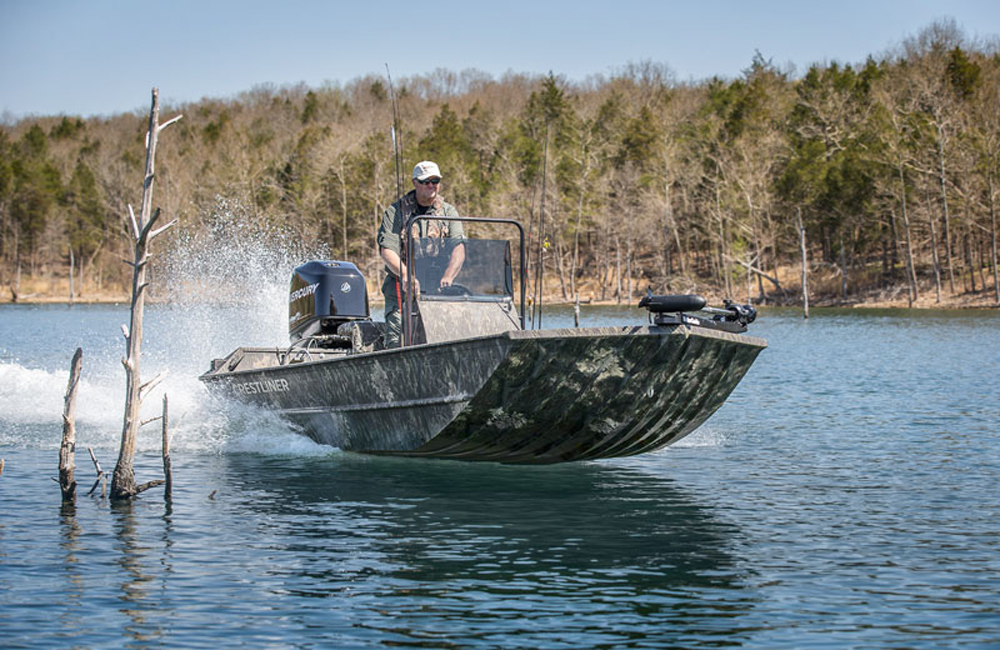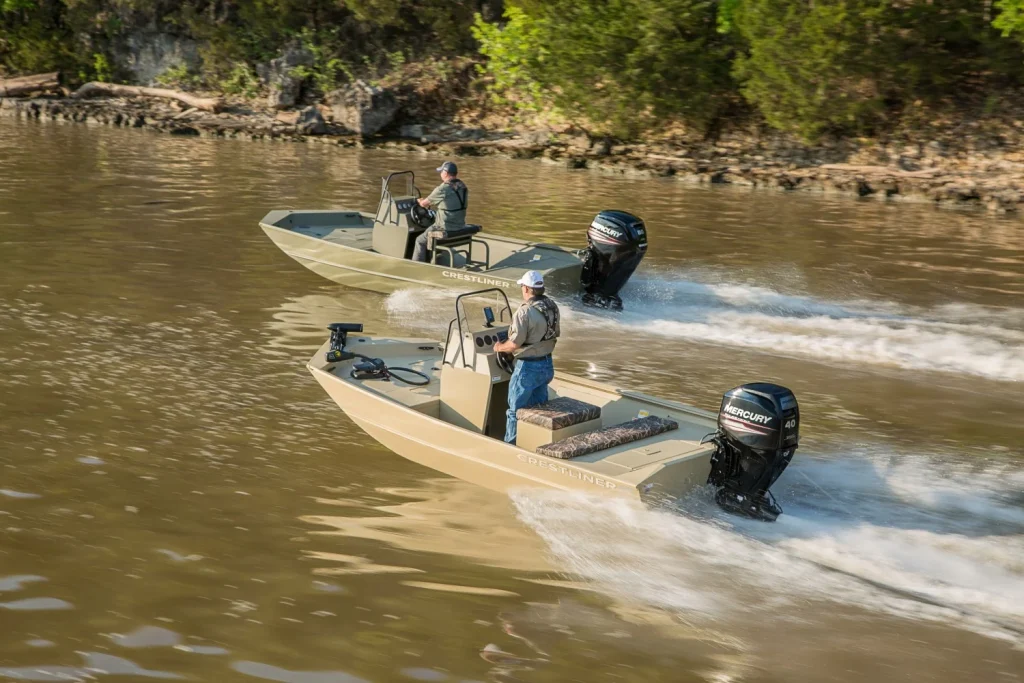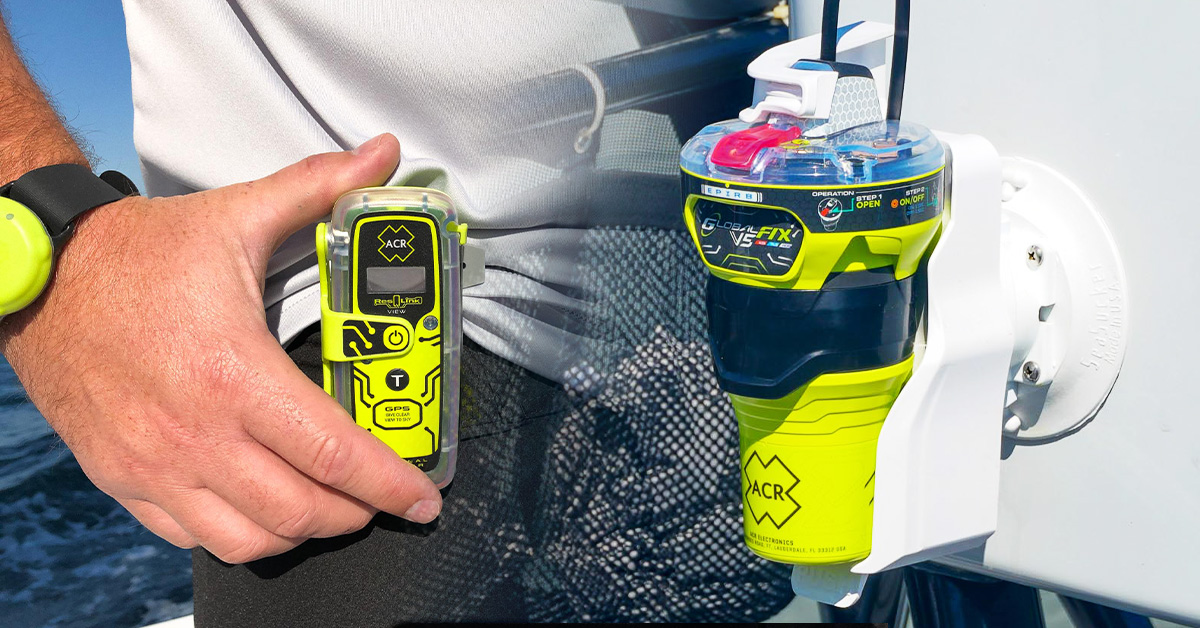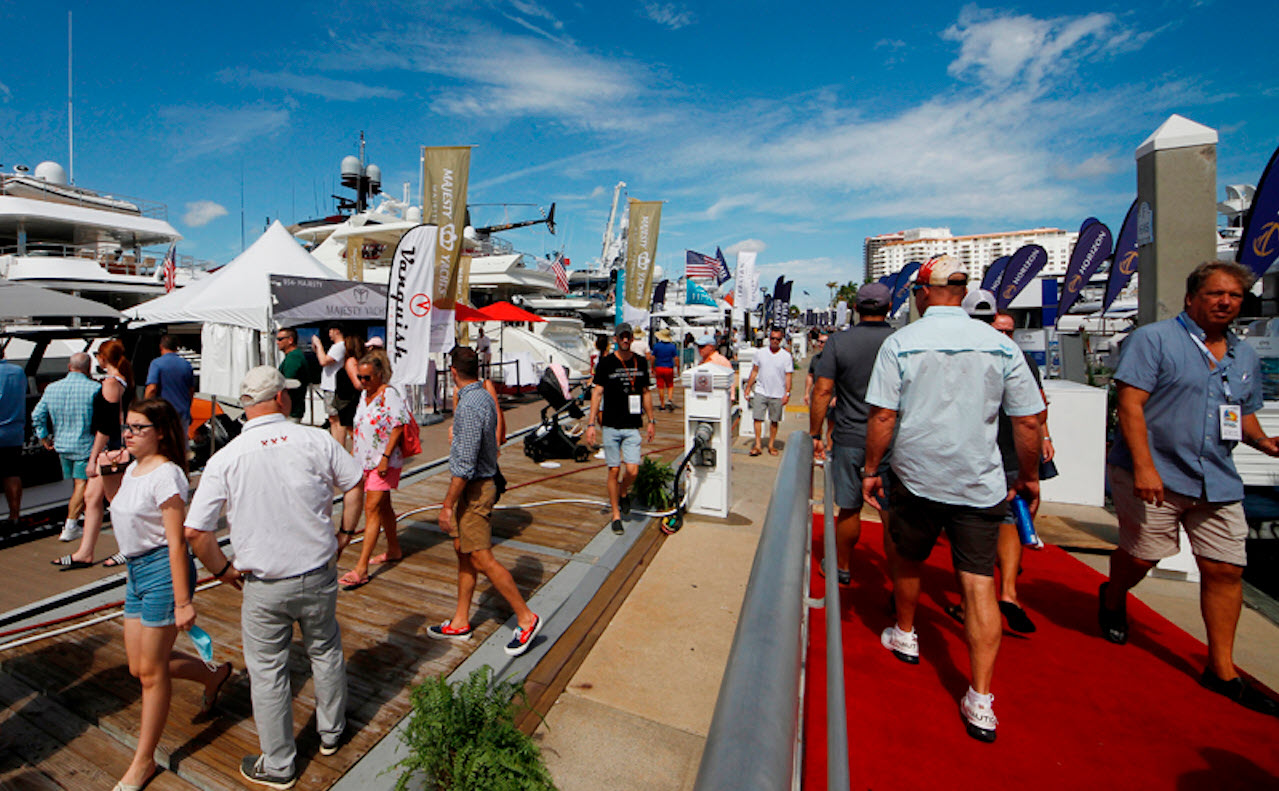Flat Bottom Boat: Essential Tips for Smooth Sailing
A flat bottom boat is a type of watercraft with a flat base that offers stability in calm waters, making it ideal for various activities.

These boats are exceptionally versatile, with common uses including fishing, hunting, and transporting goods on rivers and canals.
Their design allows them to navigate shallow waters, which many other boats cannot access.
Historically, flat bottom boats date back to ancient civilizations, such as those in Egypt, where they were primarily used for cargo transportation. Today, they are made from materials like aluminum and are equipped with features that enhance their durability and functionality.

Different types of flat bottom boats, like barges and skiffs, cater to specific needs, whether it's carrying heavy loads or quietly navigating shallow waters.
Selecting the right flat bottom boat involves considering your specific needs and environments, like whether you need a Jon boat for hunting and fishing or a shallow-drafting river skiff.
Regular maintenance and attention to safety can prolong the life of your boat and ensure a safer experience on the water.
Key Takeaways
- Flat bottom boats are stable and versatile.
- They have a long history and are used for various activities.
- Choosing the right flat bottom boat depends on your needs and environment.

History of Flat Bottom Boats
The origin of flat bottom boats dates back to ancient times, with evidence suggesting they existed before recorded history. These boats were simple to build using wood or reeds. Early versions allowed people to navigate rivers, lakes, and coastal waters easily.
Flat bottom boats come in various styles, such as the Jon boat, bateau, dory, and pram. The design features a shallow draft and a two-chined hull, making these boats excellent for shallow waters.
Flatboats emerged in the United States as sturdy, rectangular vessels used to transport goods and passengers along inland waterways. Typically, they were constructed with square ends and used primarily for downstream travel. They played a significant role in 19th-century commerce, especially on the Ohio and Mississippi Rivers.

The Durham boat was another type of flat bottom boat. It was essential during the American Revolutionary War for transporting troops and supplies. Its utility and design influenced other flat bottom boats.
In Europe, flat bottom boats like the Norfolk punt and the pünte were commonly used for similar purposes. The pirogue and sandolo are other examples from different regions, showing the global evolution of these boats.
Certain flat bottom boats, such as the scow and the quffah, were mainly used for cargo, while recreational types like the trow served dual purposes. Each variation adapted to the specific needs of its environment and users.
Design and Characteristics
Flat bottom boats are well-suited for calm and shallow waters, providing excellent stability and ease of construction. Their flat hulls make them distinct from other boats and ideal for various applications such as fishing, transportation, and leisure.
Hull Design and Stability
Flat bottom boats have a unique hull design that enhances their stability on calm waters. The hull is wide and flat, which allows the boat to float in shallow waters, as little as six inches deep. This feature makes them ideal for rivers, lakes, and wetlands.
Stability is a key aspect of these boats. Unlike V-hulls, which can tip easily in calm conditions, a flat-bottomed boat remains steady due to its wide beam. This makes it a favorite among anglers and recreational boaters who need a stable platform.
Materials and Construction
Flat bottom boats can be constructed from various materials including aluminum, fiberglass, and wood.
Aluminum and fiberglass are popular due to their durability and low maintenance. Wooden flat-bottomed boats offer a classic aesthetic but require more upkeep.
Construction techniques vary. Some boats use riveted aluminum for a lightweight yet sturdy build, while fiberglass hulls are often molded for seamless construction. The choice of materials affects the boat's weight, maintenance, and longevity.
Types of Flat Bottom Boats
There are many types of flat bottom boats, each suited for specific activities.
Jon boats are commonly used for fishing and hunting in shallow waters.
Skiffs are versatile and can be used for both fishing and transportation.
Gondolas are traditional flat-bottomed boats used in the canals of Venice.
Other types include pontoon boats, which are stable and spacious, ideal for leisure activities, and barges, used for transporting goods. Punts, dories, and the pram are also varieties of flat-bottomed boats designed for different needs and environments.
Transom and Motorization
Flat bottom boats often feature a transom, a flat back end where an outboard motor can be mounted.
These boats can be lightweight yet powerful, depending on the motor used. Smaller engines provide enough power for calm waters, while larger engines can give them decent speed.
For example, jon boats often use small outboard motors for effective maneuverability in shallow waters. The transom design is crucial as it provides the structural support needed for the motor, affecting performance and handling.
Advantages and Disadvantages
Flat bottom boats offer several advantages, including excellent stability and a shallow draft, making them perfect for shallow waters.
They are easy to build and maintain, especially those made from aluminum or fiberglass.
However, they perform poorly in rough waters and adverse weather conditions. Their flat design doesn't cut through waves easily, leading to a bumpy ride.
These boats also lack the speed and efficiency of V-hulls in open waters, limiting their use to specific environments.
Comparing Keels
Keels provide additional stability and can affect the boat's handling.
Flat bottom boats typically have no keel or a very shallow one, making them less stable in choppy waters compared to V-hulls with deeper keels.
A flat-bottom keel configuration is ideal for calm waters but isn't suited for rough conditions. Some hybrid designs, like the semi-V hull, combine elements of both flat and V-hulls, offering a balance between shallow water performance and improved handling in mild choppy conditions.
Transportation and Storage
Transporting flat bottom boats is straightforward due to their lightweight and simple design.
Smaller models can be easily loaded onto trailers or even the back of a truck. This ease of transport makes them popular among recreational users.
Storage is also convenient. They can be stored in small garages or sheds. Their simple design minimizes the space needed for storage, making them accessible for many users who have limited storage areas.
Customization and Accessories
Customization options for flat bottom boats are vast.
Owners can add various accessories such as fishing gear, seating, and storage compartments.
Jon boats, for example, can be outfitted with fish finders, rod holders, and live wells.
Different boats like canoes and skiffs can be customized to fit the owner's needs, whether for fishing, transport, or leisure.
Adding lights, coolers, and bimini tops enhances comfort and functionality, making these boats highly versatile for different activities.
Functional Uses of Flat Bottom Boats
Flat bottom boats are known for their stability and versatility, making them ideal for various activities. These boats provide excellent maneuverability and can be used in different environments, both for leisure and work purposes.
Fishing and Angling
Flat bottom boats are popular among anglers because they offer an ideal platform for fishing. Their shallow draft allows access to prime spots in rivers and lakes. This makes them perfect for bass fishing and other freshwater angling.
Fishing platforms are stable, allowing anglers to move freely and cast lines without rocking the boat.
Moreover, these boats are easy to transport and prep, making them a reliable choice for weekend trips or tournaments. The simplicity and durability of these boats make them a favored option for both amateur and seasoned anglers.
Hunting Applications
Hunters appreciate flat bottom boats for their stability and quiet operation. This is particularly beneficial for duck hunting, where remaining still and undetected is crucial.
Duck hunting boats can navigate shallow marshes and swamps easily.
The boats’ design allows hunters to bring all necessary gear without compromising stability. These boats' maneuverability is another plus, helping hunters reach secluded areas that are typically inaccessible.
Recreational Activities
For recreation, flat bottom boats serve diverse purposes.
Families can use them for calm water activities such as sailing, rowing, and leisurely trips. Their versatile design makes them suitable for various recreational activities without requiring advanced boating skills.
The boats' simplicity makes them easy to use and maintain, making them a favorite for summer outings on lakes and rivers. You can often see people using these boats for picnics, swimming, and relaxing on the water.
Commercial and Workhorse Use
Flat bottom boats are also widely used for commercial purposes.
Their design makes them excellent workhorses for transporting materials and people. These boats are often seen in canals and rivers where moving cargo efficiently is essential.
They are designed to haul heavy loads, making them indispensable for tasks such as transporting fishing gear, construction materials, and other equipment. Their stability ensures that these operations can be carried out safely without risk of capsizing.
Emergency and Rescue Operations
In emergency and rescue operations, flat bottom boats provide crucial support. Their stability and shallow draft allow rescuers to navigate flooded areas and shallow waters.
These boats are used to carry out water rescues during floods and other natural disasters. Their reliable design ensures that they can handle the weight of multiple passengers and equipment during critical missions. Rescue teams rely on these boats for their simplicity and effectiveness in saving lives.
Environmental Considerations
Flat bottom boats are uniquely suited to certain bodies of water and can have both positive and negative impacts on the environment. Key areas include waterway adaptability and ecosystem impact.
Waterway Adaptability
Flat bottom boats excel in shallow water and calm water conditions. Their flat hull design allows them to navigate through small lakes, swamps, and backwaters without getting stuck. This makes them ideal for environments like rivers and canals where water levels can be unpredictable.
These boats are especially useful in backwaters and channels, where other boats might struggle. They are stable and can easily handle the gentle flow of rivers and lakes. Another benefit is that they can access areas that are off-limits to other types of boats, providing unique opportunities for exploration.
However, they are less suitable for rough water and choppy water conditions. The flat hull can make them unstable in such environments, which limits their use in the open sea or large lakes with strong winds. Knowing where to use flat bottom boats can maximize their benefits while minimizing risks.
Impact on Ecosystems
Flat bottom boats can have both positive and negative impacts on ecosystems. They are less likely to disturb underwater plants and animals in shallow waters and calm waters because they sit higher in the water. This minimizes the environmental footprint and makes them a good choice for environmentally sensitive areas.
However, frequent use in delicate ecosystems like swamps and small lakes can lead to erosion and habitat disruption. The propellers can stir up sediment, affecting water clarity and harming fish and other aquatic life. Boaters should also be cautious about oil and fuel spills, which can be harmful to both plant and animal life.
In channels and canals, flat bottom boats are often used for environmental monitoring or clean-up operations. This can be beneficial as it helps maintain healthy waterways. Knowing how to use these boats responsibly can help preserve the environment while enjoying all the benefits they offer.
Selection and Buying Guide
Choosing the right flat bottom boat involves several important factors, including personal needs, budget, quality, and specific features of Jon boats.
Determining the Right Fit
When choosing a flat bottom boat, fit and comfort are key. Consider the size of the boat and how many people will typically be on board.
Smaller boats like Gheenoes are great for tight spaces and solo trips, while larger models offer more space for fishing gear and passengers. Always ensure there's enough room for movement to avoid feeling cramped during use.
Budget and Affordability
Budget constraints play a crucial role when purchasing a flat bottom boat. Decide whether to go for a new or used boat. Many people find used boats more affordable because they have already depreciated in value, making them a cost-effective choice (https://www.boattrader.com/research/how-to-buy-boat-ultimate-boat-buying-guide/).
Compare prices and features across various models to find one that suits your financial situation without sacrificing necessary features.
Durability and Quality
A durable and high-quality boat ensures long-term use and better performance. Look for boats made with strong materials like marine-grade aluminum, which is resistant to corrosion and dents.
Brands like Dragonfly Boatworks and Ankona Boats are noted for building robust vessels with advanced design features. Check for any warranties and read reviews to gauge the boat's longevity and reliability.
Assessing the Best Jon Boats
Jon boats are a popular choice for flat bottom boats due to their versatility and simplicity. Assessing the best Jon boats involves looking at design, length, and additional features.
For fishing and hunting, stable platforms and shallow drafts are essential for accessing prime spots. Brands like Xplor Boatworks and Sabine Skiffs offer models that perform well in various conditions.
Maintenance and Safety
Maintaining a flat bottom boat involves regular cleaning and inspections, while proper safety measures include careful navigation and preparation for emergencies. Attention to detail ensures these versatile vessels remain durable and reliable.
Routine Care and Upkeep
Routine care for a flat bottom boat is crucial for long-term durability. After each use, it’s important to clean the boat thoroughly. Use a hose and mild soap solution to remove dirt, debris, and salt. This prevents damage over time.
Inspecting the hull for any signs of wear or damage is vital. Look for cracks or chips and address them promptly. Applying a protective coating can help shield the boat from the elements. Additionally, always check and maintain the motor to ensure it is functioning correctly.
Regular maintenance includes checking the steering mechanism and other movable parts. Grease and lubricate these parts to prevent rust and ensure smooth operation. Periodic inspections and minor repairs can prevent larger, costly issues down the line.
Navigating with Safety
Safety is paramount when operating a flat bottom boat, especially in challenging conditions. These boats are known for their stability in calm waters but can be less stable in rough water.
Always heed weather forecasts and avoid navigating in turbulent conditions.
Equip the boat with essential safety gear, including life jackets, a first aid kit, and a whistle. Ensure everyone on board knows how to use this equipment. It's also advisable to have a throwable floatation device in case of emergency.
While on the water, maintain a safe speed and stay vigilant for potential hazards. Flat bottom boats allow for smooth maneuvering in shallow areas. However, it’s crucial to navigate carefully to avoid grounding or hitting hidden obstacles.
Emergency Preparedness
Being prepared for emergencies makes boating safer. Store emergency supplies in an easily accessible location. These supplies should include flares, a fire extinguisher, and extra fuel. Regularly check these items to make sure they’re in working order.
Craft an emergency plan to follow if things go wrong. This plan should cover common emergencies, like engine failure or medical issues. Ensure all passengers know their roles and responsibilities in these situations.
Additionally, having a reliable means of communication is crucial. A marine radio or fully charged cellphone can be lifesavers if assistance is needed. Regularly reviewing and practicing emergency procedures boosts confidence and ensures everyone is ready for any situation.
Cultural Influence
Flat bottom boats have made significant cultural impacts through their depiction in literature and film and their symbolism in various traditions. They reflect history and human interaction with water and trade.
Boats in Literature and Film
Flat bottom boats appear in various literary works and films, serving as symbols of adventure and survival. In Mark Twain's Adventures of Huckleberry Finn, the raft symbolizes freedom and adventure as Huck and Jim journey down the Mississippi River.
Films such as The African Queen showcase the versatility and resilience of these vessels, highlighting their crucial role in difficult circumstances. Flat bottom boats are also common in movies set in the American South or in historical contexts, where they represent the daily lives of people living near rivers and swamps.
Symbolism and Tradition
Flat bottom boats are rich in symbolism and tradition, particularly in communities near water. For example, in the Southern United States, these boats are often associated with fishing and hunting lifestyles, demonstrating a close relationship with nature.
They also play a part in traditional celebrations and reenactments of historical events. In some cultures, boat-building skills are passed down through generations, preserving ancient techniques and fostering a sense of continuity with the past. The boats' design, crafted for practical purposes, reflects a deep understanding of local waterways and a connection to the surrounding environment.
For more on the versatile uses of flat bottom boats, visit this detailed guide.
Innovations and Trends
Innovation in flat bottom boats is driven by technological advances, evolved designs, and emerging markets. These trends are shaping the future of this classic watercraft, offering improved performance, convenience, and accessibility.
Technological Advances
Technological advancements are transforming flat bottom boats. Autonomous features like Volvo Penta's Assisted Docking system are becoming popular, making boating easier and safer.
This system uses sensors, GPS, and joysticks to simplify the docking process. Another innovation includes the integration of eco-friendly propulsion systems, such as electric motors, which are reducing environmental impacts and operating costs.
Enhancements in materials, like lightweight composites, are improving durability and performance. New propulsion technologies, like those seen in hydrofoil boats, are enhancing speed and efficiency by reducing drag and improving lift.
Evolving Designs
Designs of flat bottom boats are constantly evolving to meet specific needs.
Recent innovations include the addition of vertical wood planks along the central axis of flat-bottomed boats to enhance directional control. Versatile layouts are also becoming more common, allowing for quick customization depending on use, whether for fishing, leisure, or work-related tasks.
Changes in hull shapes and structures are helping flat bottom boats achieve better stability and smoother rides, even in moderate conditions. Manufacturers are focusing on modular design elements to offer customizable options for different watercraft uses.
Emerging Markets
Flat bottom boats are gaining popularity in new markets due to their versatility and affordability.
Commercial uses are expanding, with these boats being used in areas like waterfront construction and environmental monitoring.
They are also becoming a popular choice for recreational activities, such as leisure cruises on calm inland waters, fishing, and eco-tourism.
The racing community is also seeing a rise in interest, with events showcasing the speed and agility of these boats.
Innovations in hull design and propulsion systems are making them more competitive in such sport, attracting new enthusiasts.
Advancements are opening up new business opportunities and broadening the appeal of flat-bottom boats to a wider audience.
Community and Resources
Flat bottom boat enthusiasts have a variety of resources available, including clubs and associations, events and competitions, and online forums and support.
These resources provide valuable information, opportunities to connect with other boaters, and ways to enhance the boating experience.
Clubs and Associations
Joining a club or association can be a great way to meet fellow flat bottom boat enthusiasts.
Clubs often organize regular meetups, training sessions, and group outings.
They provide a platform for sharing tips and advice on boat maintenance, fishing spots, and safety practices.
Local clubs may also offer access to exclusive boat ramps or facilities.
National associations sometimes offer benefits like discounts on boating gear or insurance.
Events and Competitions
Events and competitions are popular among flat bottom boat owners.
Many regions host fishing tournaments, boat races, and boat shows.
These events can offer prizes and recognition for skill and craftsmanship.
Fishing tournaments, for example, often include categories for various fish species. Boat races might focus on speed and navigation skills.
These gatherings are not only competitive but also social, providing a chance to mingle with like-minded individuals.
Online Forums and Support
Online forums and support groups are invaluable resources for flat bottom boat owners.
Websites and social media groups allow boaters to ask questions, share experiences, and seek advice on repairs and modifications.
Some popular forums offer sections dedicated to specific types of flat bottom boats, like Jon boats or skiffs.
These platforms can also be excellent sources for buying and selling boats and gear.
Engaging with an online community helps keep boaters informed about the latest trends and best practices.
Frequently Asked Questions
Flat bottom boats are ideal for specific activities and offer unique benefits compared to other types of boats. Here, we address common questions about their uses, performance, and important factors to consider.
What types of activities are flat bottom boats best suited for?
Flat bottom boats excel in calm water conditions.
They are popular for fishing, hunting, and utility work.
Their stability makes them a great choice for these activities.
How does the performance of a flat bottom boat compare to a V-hull boat in rough water?
Flat bottom boats provide excellent stability in calm waters but can become less stable in rough water.
V-hull boats handle rough waters better due to their design, allowing them to cut through waves more effectively.
What are the primary uses for jon boats?
Jon boats are often used for fishing and hunting.
Their flat bottom design is perfect for navigating shallow waters and provides a stable platform for various activities.
What factors should be considered when choosing a motor for a flat bottom boat?
When choosing a motor, consider the boat's size, weight, and intended use.
It's important to select a motor with appropriate horsepower to ensure adequate power without compromising stability or performance.
How does the material of a flat bottom boat affect its durability and performance?
The material of a flat bottom boat, whether wood, fiberglass, or aluminum, greatly affects its durability and performance.
For instance, fiberglass boats are tough and versatile, while wooden boats might require more maintenance but can be easier to repair.
What are the common lengths of flat bottom boats and how do they impact stability and space?
Common lengths of flat bottom boats range from small 10-foot boats to larger 20-foot boats. Smaller boats are more maneuverable but offer less space. Meanwhile, larger boats provide more stability and room for gear and passengers.
Charlie is Editor-in-Chief of Sea Magazine







